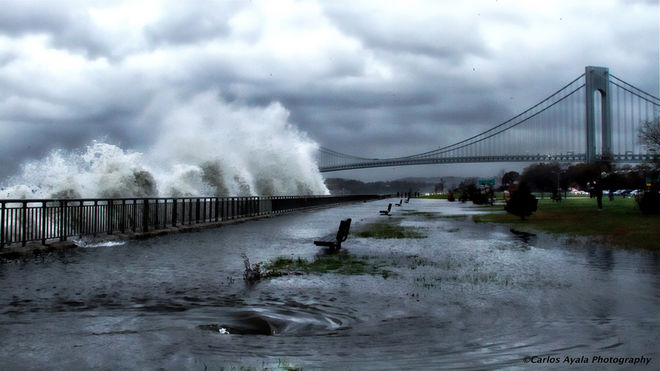Drought Exacerbates Tensions in Tunisia – A persistent drought is threatening agriculture, leading to protests over water and enhancing existing social tensions in Tunisia.
Companies Taking Water Risk Seriously – Forbes Magazine surveys private sector concerns about water scarcity and business strategies to reduce risk.
Global Climate Risk Threshold Passed – scientists say global CO2 levels surpassed 400 (parts per million) ppm in September. To keep global temperatures from rising 2°C, the Intergovernmental Panel on Climate Change (IPCC) estimates that CO2 ppm levels should stay below 450 ppm.
China Suffers Large Losses from Typhoon – Insured losses on mainland China from September’s Typhoon Meranti are expected to fall between $650 million and $1.15 billion. The intensity and frequency of typhoons that make landfall across the East Asia region have been increasing.
Climate Implications for Risk Assessment and Insurance – Companies can now expect to see higher flood premiums, larger flood deductibles and stricter underwriting standards as new scientific evidence suggests climate has made flooding events from Louisiana to Paris more severe.
BlackRock Advances Climate Risk Assessment – Managing trillios in assets, BlackRock said all investors should factor climate risks into their decision-making and “doing so would not mean having to accept lower returns.”
Climate a Significant Security Risk Says Military – Military and national security experts recommend the federal government to create a cabinet-level official to manage climate and security issues.
Rising Seas Threaten Islands in South Pacific – Island nation of Kiribati, in the South Pacific, might be the first country to be entirely eliminated due to sea level rise in 30 to 50 years.
Mars Chocolate Hires Meteorologists to Forecast Risks – Worried about how extreme weather is impacting its supply chain, Mars has hired meteorologists to better understand climate risks, from disruptive storms to changing growing conditions, for its chocolate supply.




